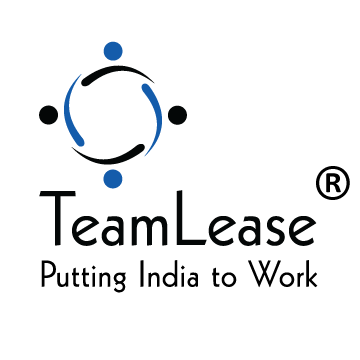New Labour Code: A Workforce Wake-Up Call for India

For years, India’s labour ecosystem resembled a dusty filing closet, layered, confusing and waiting for someone brave enough to open it. The arrival of the New Labour Code didn’t introduce more files into that cabinet; it attempted to replace the cabinet altogether. Think less “manual maze of compliance registers” and more “GPS-enabled workforce regulations.” Suddenly, organisations that treated labour laws as static reference documents now realise that compliance needs to be lived every day, not visited once a quarter.
This is why the ongoing trend across industries isn’t just digitisation or automation; it’s workforce management driven by a discipline of statutory compliance. The question for organisations has shifted from Are we compliant? to How do we build a workforce model that remains compliant at all times?
Statutory Compliance: The New Centre of Workforce Strategy
The New Labour Code has turned statutory compliance into a business-critical priority. With higher penalties, uniformity across states and individual accountability for decision-makers, compliance has moved from the legal department’s diary to the CEO’s checklist. HR teams now talk more about audit trails, real-time filings and statutory compliance dashboards than physical registers. In 2025, the workforce conversation isn’t just about hiring faster, it’s about hiring right, scheduling right and documenting right.
This shift explains why workforce management partners like TeamLease have become more central to organisational planning. As companies navigate the New Labour Code, they are increasingly relying on compliance-ready workforce models to prevent shocks later in the employee lifecycle.
Compliance Risk: The Cost of Not Managing the Business Right
Under the old regime, a compliance miss meant a notice. Under the New Labour Code, a compliance miss can mean operational disruption, workforce dispute, reputational dent or contract loss. Industries such as manufacturing, pharma, logistics and e-commerce feel this first because a minor compliance risk in one facility can trigger a chain reaction across locations.
Organisations are suddenly treating compliance risk the way they treat cyber risk or supply chain risk, not as a legal formality but as a business threat. And since risk usually stems from gaps in workforce deployment, workforce partners with depth in statutory compliance, like TeamLease, are now viewed as risk-mitigation allies, not just staffing enablers.
The Compliance Report Has Become a Workforce Report
The unsung hero of this transformation is the compliance report. Earlier, it existed to show filings. Today, it exists to show continuity, predictability and adherence. A compliance report is no longer a quarterly PDF; it is a live workforce performance dashboard. It doesn’t only document what has been done; it signals what might go wrong next.
Because of the New Labour Code, organisations are moving toward team-wise, site-wise and category-wise compliance reports, making workforce decisions more data-led. TeamLease has been at the centre of this shift, with organisations demanding plug-and-play, audit-ready compliance reports that support both internal governance and client audits, particularly in multi-location and multi-shift operations.
How Industries Are Responding to the New Labour Code
Different sectors feel the same regulation very differently. In manufacturing, where shift dependency and safety are non-negotiable, the New Labour Code is influencing manpower planning models and compensation structures. In logistics and e-commerce, predictable overtime and benefit norms are shaping peak-season demand planning. In IT and services, the clarity around contract staffing and gig workers is enabling more hybrid workforce structures. In retail, where frontline labour drives business continuity, audit-ready statutory compliance is becoming as core as store operations. And in healthcare, compliance is inseparable from workforce trust because talent retention, safety and schedule predictability are interlinked.
Across sectors, one thing is common: workforce strategy is becoming compliance strategy.
Women in the Workforce: A Shift Worth Noticing
One of the most encouraging ripple effects of the New Labour Code is the way it can support women’s participation across operational and shift-based roles. With transport provisions, night shift safety requirements, strengthened wage-parity clarity and creche norms, the question is no longer “Can women work across shifts?” but “How do we ensure women remain and grow in these roles?” Industries like logistics hubs, electronics manufacturing, BFSI, healthcare and hospitality are already redesigning workforce structures instead of job descriptions. And organisations are looking to partners like TeamLease to ensure statutory compliance frameworks support women’s safety, continuity and return-to-work journeys.
The Bottom Line: Compliance Is Now Culture
The New Labour Code did not just rewrite statutory compliance requirements; it rewrote workforce priorities. Compliance risk can now influence hiring. Statutory compliance can now define whether a workforce is sustainable.
Which is why companies that treat compliance as paperwork will fall behind, and companies that treat compliance as a workforce operating model will scale faster, safer and more profitably. And this is exactly where TeamLease is shaping the trend, helping organisations stay on the right side of the New Labour Code not once a year, but every single day.
Looking to make your workforce New Labour Code–ready?
Latest Blogs
New Labour Code: A Workforce Wake-Up Call for India
For years, India’s labour ecosystem resembled a dusty filing closet, layered, confusing and waiting for someone brave enough to open it. The arrival of the...
Read More4 New Labour Codes: How Workers and Employers Benefit
Reforms shape the future only when they simplify the present. India’s new Labour Codes stand out as one of the most meaningful updates to the...
Read MoreEmployer of Record (EOR) Services: Hire in India
According to the International Monetary Fund (IMF), India remains the only major economy projected to grow above 6% in FY 2025, with a forecasted GDP...
Read MoreRPO vs Contract Staffing: Choosing the Right Talent Model
The Talent Dilemma: Balancing Long-Term and Short-Term Hiring Needs Priya, the HR Head of a fast-scaling Indian startup, faced a familiar challenge. Her company was...
Read MoreWhat Are the 3 New EPFO Withdrawal Rules? Explained Clearly
Social security isn’t about saving for retirement; it’s about staying secure through every stage of work.” The Employees’ Provident Fund Organisation (EPFO) has revamped its...
Read More





